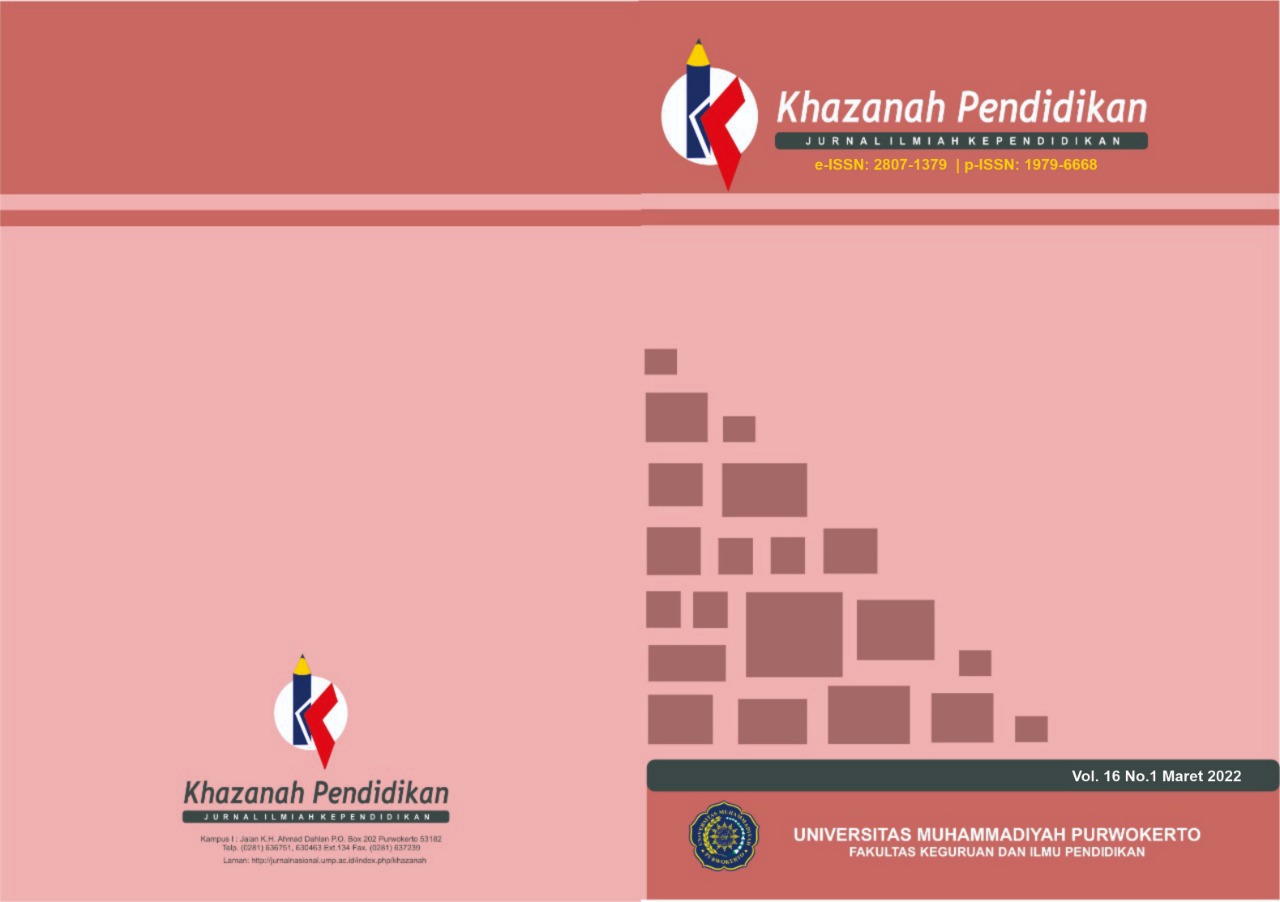ANALISIS PROFIL KESIAPAN KELUARGA DALAM RANGKA MEMFASILITASI PERKEMBANGAN BAHASA ANAK DI RUMAH PADA SAAT PANDEMI (STUDI KUALITATIF KEPADA ORANG TUA SISWA SEKOLAH DASAR)
DOI:
https://doi.org/10.30595/jkp.v16i1.12737Keywords:
Family readiness profile Language developmentAbstract
This study aims to determine the readiness of families, especially in parents in facilitating language developmnet at home in pandemic era, and to analyze readiness in a complex manner both of facilities and family culture. This research was conducted on 70 parents or guardians of elementary school students. This study used qualitative research method. Data analysis used the Miles and Huberman models with the following steps; (1) data collection, (2) data reduction, (2) data presentation, and (3) drawing conclusions / verification. Data were collected through observation and interviews. The results of the study were discussed from two aspects of the student language environment, namely the physical and non-physical environments. From these two environments, it can be concluded that there are four principles of literate family, namely 1) The abundance of reading material. 2) Various texts/labeling based on the children's needs. 3) language interaction. 4) Integrated and sustainable activity. From these four principles, it is found that in average, the language interaction in family is high enough only, and this is related to the purpose of formal education. However, the environment and culture of family language have not been built in integrated and sustainable way considering that preparing literate generations in pandemic era must focus on sustainable and integrated processes in order to get long term benefits. So the results of this study are necessary to be used as a reference for parents, schools, and policy makers in preparing schools to study at home.
References
Alison, E. Baroody, Karen E Diamond. (2016). “Associations among preschool children’s classroom literacy environment, interest and engagement in literacy activities, and early reading skills”. Journal of Early Childhood Research, Vol. 14(2) 146 –162, sagepub.co.uk/journalsPermissions.nav DOI: 10.1177/1476718X14529280 ecr.sagepub.com.
Carol S., Beers, James W. & Smith, Jeffrey O. (2010). A Principal’s Guide to Literacy Instruction. New York: The Guilford Press.
Cartwright, Kelly B., Marshall, Timothy R., & Dandy, Kristina L. (2010). The Development of Graphonoligical-Semantic cognitive Flexibility and Its Contribution to Reading Comprehension in Beginning Readers. Journal of Cognition and Development, 11:1, 61-85, DOI: 10.1080/15248370903453584. Http://dx.doi.org/10.1080/15248370903453584
Carol S., Beers, James W. & Smith, Jeffrey O. (2010). A Principal’s Guide to Literacy Instruction. New York: The Guilford Press.
Direktorat Jenderal Pendidikan Dasar dan Menengah. (2016). Panduan Gerakan Literasi Sekolah di Sekolah Dasar. Jakarta: Direktorat Jenderal Pendidikan Dasar dan Menengah, Kementerian Pendidikan dan Kebudayaan Republik Indonesia.
Erin Schryer, Elizabeth Sloat, and Nicole Letourneau. (2015). “Effects of an Animated Book Reading Intervention on Emergent Literacy Skill Development: An Early Pilot Study”, Journal of Early Intervention 2015, Vol. 37(2) 155 –171 © SAGE Publications Reprints and permissions: sagepub.com/journalsPermissions.nav DOI: 10.1177/1053815115598842 jei.sagepub.com.
Huck, Charlotte S. (1987). Children Literature in the Elementary School. New York: Holt Rinehart.
Jill Barr-Walker. (2016)."Health literacy and libraries: a literature review", Reference Services Review, Vol. 44 Iss 2 pp. 191 - 205 Permanent link to this document: http://dx.doi.org/10.1108/RSR-02-2016-0005
Kern, R. (2000). Literacy and Language Teaching. Oxford: Oxford UniversityPress.
King, Constance Steinkuehler Elizabeth, (2009),"Digital literacies for the disengaged: creating after school contexts to support boys' game- based literacy skills", On the Horizon, Vol. 17 Iss 1 pp. 47 - 59 Permanent link to this document: http://dx.doi.org/10.1108/10748120910936144
Kozulin, A. (2015). Vygotsky’s Theory of Cognitive Development. International Encyclopedia of the Social & Behavioral Sciences, (2nd Ed), volume 25. doi: 10.1016/B978-0-08-097086-8.23094-8
Mawardi dan Nur Hidayati. (2000). IAD-ISD-IBD, Bandung: CV. Pustaka Setia,
Musthafa, Bachrudin. (2014). Literasi Dini dan Literasi Remaja: Teori, Konsep, dan Praktik. Bandung: CREST.
Montessori, Maria. (2008). The Absorbent Mind (pikiran yang mudah menyerap). Terj. Daryanto. Yogyakarta: Pustaka Pelajar.
Rahman. (2017). Multiliterasi dan Pendidikan Karakter. Prosiding Seminar 2nd International Multiliteracy Conference and Workshop for Students and Teachers, hlm. 331-336. Bandung: Universtias Pendidikan Indonesia.
Shaffer, R. David & Kipp, Katherine. (2014). Developmental Psychology Childhood and Adolescence (9th Edition). University of North Georgia Cengage Learning Wadsworth 20 Davis Drive Belmont, CA 94002-3098 USA
Teaching Strategies. (2010). Research Foundation: language and Literacy. Teaching Strategies, Inc. All Right Reserved.
USAID PRIORITAS. (2014). Pembelajaran Literasi Kelas Awal di LPTK.www.prioritaspendidikan.org
Downloads
Published
Issue
Section
License
Authors who publish with this journal agree to the following terms:
Authors retain copyright and grant the journal right of first publication with the work simultaneously licensed under a Creative Commons Attribution License that allows others to share the work with an acknowledgement of the work's authorship and initial publication in this journal.
Authors are able to enter into separate, additional contractual arrangements for the non-exclusive distribution of the journal's published version of the work (e.g., post it to an institutional repository or publish it in a book), with an acknowledgement of its initial publication in this journal.
Authors are permitted and encouraged to post their work online (e.g., in institutional repositories or on their website) prior to and during the submission process, as it can lead to productive exchanges, as well as earlier and greater citation of published work (See The Effect of Open Access).

Khazanah Pendidikan is licensed under a Creative Commons Attribution 4.0 International License.


